Research
Research
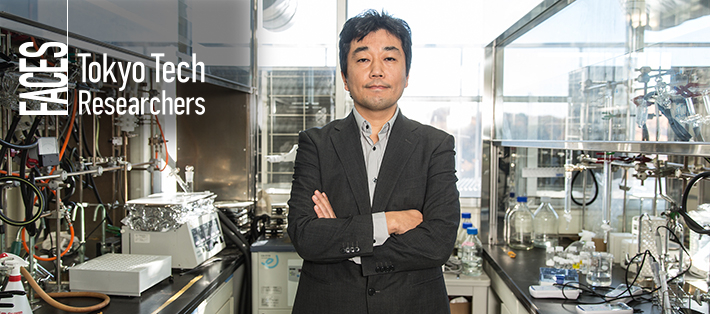
Issue 29
ProfessorNobuhiro Nishiyama
Laboratory for Chemistry and Life Science, Institute of Innovative Research
In 400 B.C., the Greek philosopher Hippocrates, known as the father of Western medicine, wrote that good medicines work where we want them to work. Medicines that affect unhealthy cells only have been the elusive dream of scientists for thousands of years. Working at Tokyo Tech's Laboratory for Chemistry and Life Science, Professor Nobuhiro Nishiyama strives to realize such medicines utilizing polymers.1
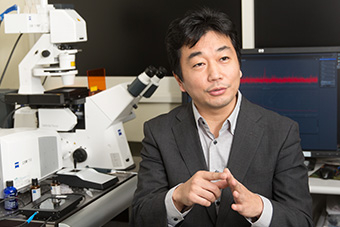
"The process of developing medicines is called drug discovery, a field that has until recently focused on low-molecular compound2 design. We do, however, sense that we are reaching a limit with the existing process, as the probability of success in new drug development is now said to be one in 30 thousand. What's more, the process often requires an investment of more than 10 years and hundreds of millions of dollars. While very effective drugs continue to be developed, concerns about unacceptable side effects have also increased. With all these obstacles, we decided to focus on ways to deliver drugs to target cells by utilizing polymers. If we can use these polymers as platforms for drug delivery and incorporate smart functionalities that allow them to attach to unhealthy cells, or make cells visible from outside the body, then I feel we will have developed the ultimate medicine," Nishiyama elaborates.
The technology that delivers the necessary amount of drug to the necessary location is called a drug delivery system (DDS). The concept of drug discovery using polymers was advocated by European researchers in the mid-1970s. So why is it attracting renewed attention now? Nishiyama explains, "DDSs were too advanced for the time when low-molecular compound medicines were the main focus. Since drug discovery has become more difficult and nucleic acid drugs3 and biomedicines4 have become the trend, DDSs have once again come into the spotlight. In the past 30 to 40 years, synthesis technology has significantly improved to allow the development of a wide variety of polymers, and the application of functional molecules such as aptamers5 and single-chain antibodies6 has improved performance. Although it was once thought impossible to develop nucleic acid and antibody drugs,7 they are becoming the trend in pharmaceuticals. I believe that drug discovery using polymers will continue to increase in importance."
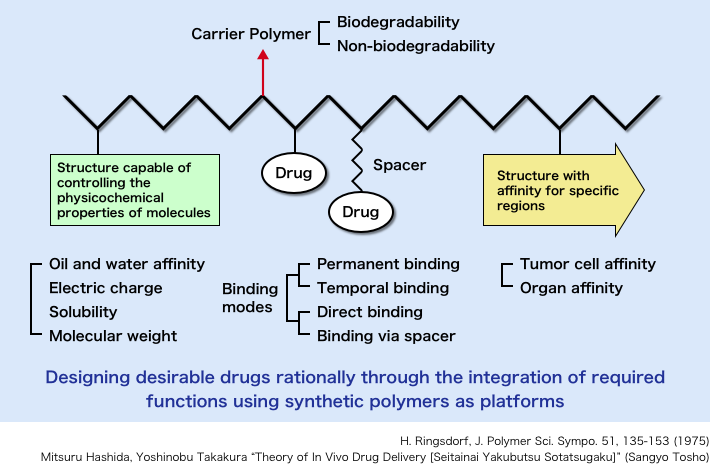
Figure 1. Polymer drug model developed by polymer chemist Helmut Ringsdorf
Recently, new concepts in medical treatment have developed — concepts such as precision medicine, which customizes healthcare with medical decisions, treatments, practices, and products tailored to the individual patient. This requires more advanced diagnostic and therapeutic technologies. It has also become necessary to equip DDSs with more functions beyond simply delivering drugs. These functions include the ability to reach any location inside the body, the ability to respond to extremely small changes in lesions, the ability to reveal symptoms outside the body, and the ability to change the speed of drug delivery. Fantastic Voyage, a 1966 American film about a miniaturized submarine injected into a patient to treat a blood clot in his brain, is today somewhat less fantastical. The technology of a nanomachine, made of polymers measuring 50 nanometers in diameter, is in high demand, and DDSs are fast evolving into these "in vivo submersibles."
As a student of Professor Kazunori Kataoka, director general of the Innovation Center of NanoMedicine (iCONM) and a leading expert in DDS research, Nishiyama developed a nanocapsule (polymer micelle) DDS containing cisplatin. This capsule, 30 nanometers in size, selectively penetrates cancer tissues, which have larger spaces on their vessel walls, while avoiding the blood vessels of healthy tissues. There are no apparent side effects, and clinical studies are being conducted on humans in the hope of achieving practical application in the near future.
To provide effective treatment, Nishiyama also developed a nanomachine contrast agent. This agent contains manganese ions, which are also used as contrast agents in magnetic resonance imaging (MRI). Ions are emitted according to changes in pH, the levels of which are lower in cancer tissues due to glucose8 hypermetabolism. Particularly in low-oxygen (hypoxic) regions, which are thought to include cancer cells with a high degree of malignancy, pH is markedly low due to anaerobic metabolism.9 MRI experiments on mice have shown that injection of the nanomachine contrast agent allows highly accurate detection of cancer cells measuring only 1.5 millimeters in diameter that have spread to the liver, and the visualization of hypoxic regions without invasive biopsy. Nishiyama comments, "A nanomachine contrast agent makes it possible to predict the accumulation of DDS in cancer sites. Using the nanomachine contrast agent during medical treatment allows us to examine effects promptly, and this leads to more effective treatment targeting specific points." Undoubtedly, nanomachine technology is innovating medical care.
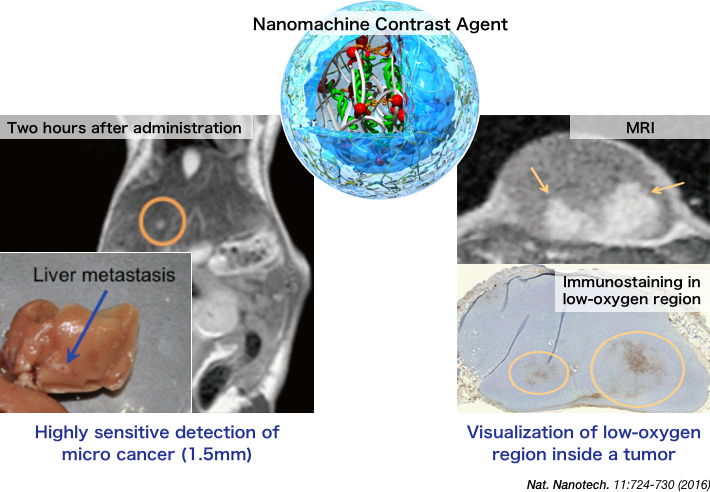
The application of nanomachines to medical treatment requires ease of use, cost control, and quality assurance in accordance with pharmaceutical regulations. Complex systems allow us to write good academic papers, but they make practical application extremely challenging. Nishiyama aims to provide advanced functions with as simple a structure as possible, and is working on the development of new materials for use in nanomachines. One of these is a water-soluble polymer10 that recognizes transporter11 density in individuals with cancer and selectively interacts with cancer cells.
Antibodies12 have found broad application in the targeting of specific cancer cell sites. They recognize antigens on the surface of cancer cells. However, recognizable cancer antigens13 are limited and the antibodies are not effective against all antigens. In addition, there is a risk of cancer cells with a low level of cancer antigen expression increasing after treatment, resulting in recurrence. On the other hand, targeting the molecules that are essential for the survival of cancer cells is thought to be effective against all cancer cells. Such molecules, however, also exist in normal cells, making it impossible to target cancer cells only.
Therefore, Nishiyama has focused on the specific metabolism of cancer cells. Cancer is considered a metabolic disorder. Positron emission tomography (PET) imaging, which can visualize glucose metabolism, has been applied broadly in cancer diagnosis.
It is known that glutamine14 metabolism promotes cancer cell development as well as glucose metabolism. Generally, glutamine is taken in intracellularly via a transporter. Nishiyama developed a water-soluble polymer that interacts with cancer cells by introducing multiple glutamine structures to the polymer side chain. While mostly overlooking normal cells with low transporter expression levels, this polymer interacts strongly with high transporter expression level cancer cells via multidentate binding (Figure 3). In other words, the polymer binds specifically to cancer cells by recognizing the density of the transporter, and can target any cancer cell with active glutamine metabolism.
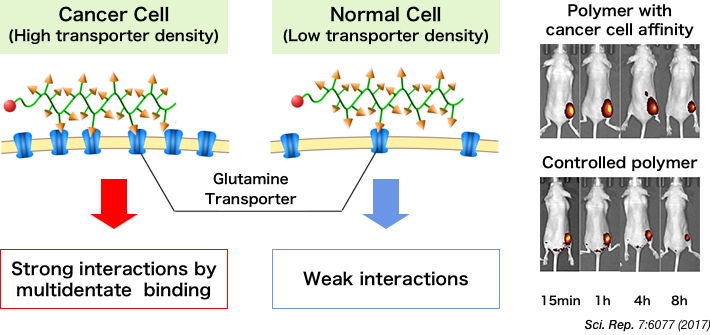
Figure 3. Development of polymers that compose nanomachine capsules with cancer cell affinity
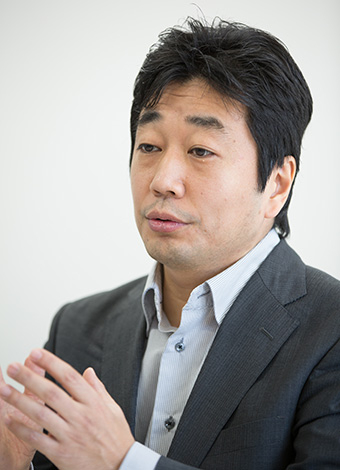
Such design is impossible with antigens that target one protein molecule. It is therefore necessary to use polymers. Water-soluble polyethylene glycol (PEG) has been used for nanomachine capsules to deliver anti-cancer drugs and contrast agents. Nishiyama believes his water-soluble polymer with affinity to cancer cells can be used as an alternative to PEG. "Designing such polymers with smart functions will allow us to develop simple yet highly functional nanomachines."
The research described above is a recent achievement, but Nishiyama has been working on a wide range of research and development activities aiming to realize future medical care. This includes the development of nanomachines for nucleic acid medicine delivery as well as minimally invasive treatment systems — one-day treatment requiring no hospitalization — through the integration of medical devices and nanomachines in a government-supported program organized by the Japan Agency for Medical Research and Development (AMED) and the COI STREAM by the Ministry of Education, Culture, Sports, Science and Technology (MEXT).
In 2013, Nishiyama was assigned to the Polymer Chemistry Division at the Chemical Resource Laboratory (CRL), the predecessor of the current Laboratory for Chemistry and Life Science (CLS). "CRL had a long history of research on polymers. Professor Hideki Shirakawa, who received the 2000 Nobel Prize in Chemistry for the discovery and development of conductive polymers, also carried out his research here. For this reason, I feel both pride and responsibility in my role as a leader in this lab. Nanomachine research requires synthesis as well as cell and animal experiments. With the tremendous support we receive from CLS, we enjoy an environment that allows us to conduct all of these experiments."
"I also greatly appreciate the laboratory environment for students here. In fact, I was a graduate student studying under Professor Kataoka when I developed cisplatin nanocapsules, which are now undergoing clinical trials. I hope to work with graduate students to develop practical solutions for healthcare. The efforts of these students now may lead to improved medical care that saves lives in the future. It is important for us to carry out research with this dream in mind," says Nishiyama.
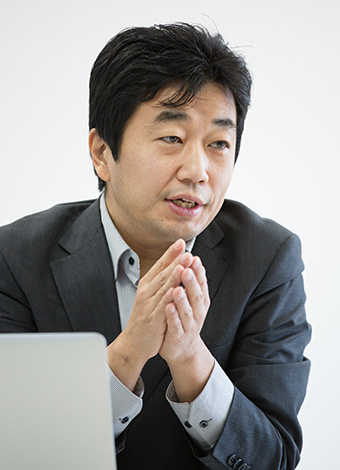
Conducting research and development, however, is not always easy. "Challenging research fails more often than it succeeds. As was the case with research on conductive polymers carried out by Professor Shirakawa, many discoveries came from failures. It is important for us to follow our interests without worrying about success or failure. Considering potential results is of course important, but we should not be too hasty with our conclusions. Even with failures, we get unexpected results. My mentor, Professor Kataoka, always told me, 'Never, ever, ever give up!' He meant that we should stick with what we have decided to do. Although I have had repeated failures in my research, I have continued with the strong intention to unveil something special. I will continue moving forward to achieve my dreams. I want all students to understand the importance of not giving up," Nishiyama concludes.
Very large molecules classified into natural and synthetic polymers. Synthetic polymers are composed of repeated specific monomers, and are used in a wide range of fields such as chemicals, automobiles, electronic devices, energy, and biotechnology.
Small compounds with low molecular weight, often several 1,000 or less, which are distinguished from biopharmaceuticals.
Drug whose basic structure is a natural and chemically modified nucleotide. Many drugs can be designed for different targets depending on their nucleotide sequences.
Pharmaceuticals made of proteins and nucleic acids, and manufactured, extracted, or semi-synthesized utilizing living things. These differ from low-molecular medicines, and are becoming the trend in pharmaceuticals due to advances in biotechnology.
Nucleic acid molecules or peptide molecules that bind to specific target molecules. Usually created from a large random sequence pool and expected to be the molecular alternative to antibodies.
Fusion proteins of the variable regions of the heavy and light chains of immunoglobulins, connected with a short linker peptide. Expected to be an alternative to antibodies.
Made of molecules that bind to the target to deliver the immune function of a living body with an extremely high degree of specificity. Rank highly in the anticancer drug market and have become the mainstream in pharmaceuticals.
The most important energy source for a living body.
Metabolism of glucose without oxygen. Energy production efficiency is low, and organic matter is generated.
A synthetic polymer soluble in water.
Exists on the cell surface to transport ions, glucose, and amino acids across the membrane.
Responsible for the immune function of the living body, antibodies bind with high specificity to their target, neutralizing and removing pathogens.
Proteins with which the immune system recognizes cancer cells. HER2, which exists in breast cancer cells, is one of these.
A type of amino acid. Cancer cells take in more glutamine and proliferate as more fatty acids, proteins, and nucleic acids are synthesized for the cells to survive.
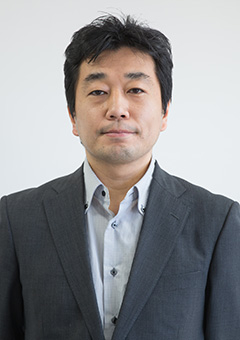
Nobuhiro Nishiyama
Profile
School of Life Science and Technology
—Unravel the Complex and Diverse Phenomena of Life—
Information on School of Life Science and Technology inaugurated in April 2016
The Special Topics component of the Tokyo Tech Website shines a spotlight on recent developments in research and education, achievements of its community members, and special events and news from the Institute.
Past features can be viewed in the Special Topics Gallery.
Published: January 2018